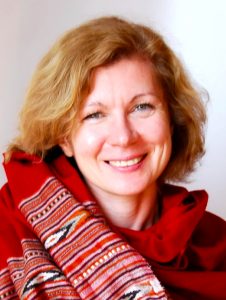© 2017 Anna OZHIGANOVA
2017 № 2 (14)
 Key words: home birth, independent midwifery, alternative practice, professional project, legalization of independent midwifery
Key words: home birth, independent midwifery, alternative practice, professional project, legalization of independent midwifery
Abstract: In the interview with E.V. (initials changed), who is one of the most famous Moscow home birth attendants experienced in assisting at childbirth for more than seventeen years, we discuss the problems of Russian obstetric help provided at home and in maternity homes. E.V. tells about how she became a home midwife, where she studied, how she gave birth to her own children (she has six children, five of which were born at home). We discuss what have changed in the practice of Russian home midwifery during the last twenty years, first of all how the home midwifery has transformed from the alternative (dissident) practice into a professional project.
Home birth remains a poorly studied area in contemporary Russia despite a significant interest in this phenomenon from a number of researchers (Andreeva 2014, Borozdina 2014; Ozhiganova 2006; Ozhiganova 2017; Pivovarova 2013; Belooussova 2002; Belousova 2002; Belousova 2012). The illegal status of home midwifery is a significant problem for studying the practice of home birth and the community of home birth attendants. Often midwives are afraid to publicize some aspects of their activities and details of their biography. Research is also complicated by the heterogeneity and disunity of the community of home midwives: they represent different groups that vary greatly by their ideology and practice.
A.O.: How to become a domestic midwife? Where can you study this? To what extent does your own experience of pregnancy and childbirth matter?
E.V.: I was not going to become a midwife. I studied at an engineering institute and had no special interest in medicine and obstetrics. It all started with the fact that I myself gave birth to my second child at home.
A.O.: What kind of education do domestic midwives get?
E.V.: I studied a lot, graduated from a medical school, attended midwifery courses in Holland, as well as courses that were held in Moscow by famous British and American midwives.
A.O.: By what criteria, in your opinion, we can evaluate professionalism of domestic midwives?
E.V.: This is a different type of education, not the same as for childbirth in a hospital. Our task is to do our job good enough so that we don’t have to resort to resuscitation services.
We created an Association of Professional Midwives (APA), registered as a regional professional organization. We realized that we need to unite our efforts on the basis of what we all do and understand in the same way. We’ve come up with a program, developed criteria for professional work, standards of practice, signed commitments to comply with these standards. Currently, the Association of Professional Midwives unites about 100 practicing midwives (as well as doles, neonatologists and other perinatal specialists) who call themselves ‘certified professional midwives’.
References
Andreeva, Y. (2014) «Babich’e delo» v rasskazakh posledovatelei dvizheniia «Anastasiia», Radlovskii sbornik: nauchnye issledovaniia i muzeinye proekty MAE RAN v 2013 g.[“Women’s case” in the stories of followers of the movement “Anastasia”, Radlov collection: research and museum projects of the MAE RAS in 2013], Yu. K. Chistov (ed.), St. Petersburg: MAE RAS, p. 344–353.
Beloousova, E. (2002) The ’Natural Childbirth’ Movement in Russia: Self-Representation Strategies, Anthropology of East Europe Review, 20 (1), p. 11–18.
Belousova, E. (2002) The Preservation of National Childbirth Traditions in the Russian Homebirth Community, Journal of the Slavic and East European Folklore Association, 7(2), p. 50–77.
Belousova, E. (2012) Waterbirth and Russian-American Exchange: From the IronCurtain to Facebook, Doctoral Dissertation, Houston.
Borozdina, E. (2014) Language of Science and Language of Love: The Legitimation of Independent Midwifery Practice in Russia, Laboratorium, N 6 (1), p. 148-153.
Ozhiganova, A.A. (2006) Sovremennye perinatal’nye kul’tury: traditsionnaia i al’ternativnaia modeli [Modern perinatal cultures: traditional and alternative models], Polevye materialy Instituta etnologii i antropologii RAN [Field materials of the Institute of Ethnology and Anthropology of the Russian Academy of Sciences], 2005, Moscow: IEA RAS, p. 63–83.
Ozhiganova, A.A. (2017) Domestic midwife as a contemporary cultural hero[Domashniaia akusherka kak sovremennyi kul’turnyi geroi], Sila slabykh: Gendernye aspekty vzaimopomoshchi i liderstva v proshlom i nastoiashchem, Materialy X mezhdunarodnoi konferentsii RAIZhI [The Power of the Weak: Gender Aspects of Mutual Aid and Leadership in the Past and the Present, Proceedings of the X International RAIZHI Conference], Moscow: IEA RAS, p. 266 –271.
Pivovarova, A. (2013) «Zabytaia» platsenta: simvolicheskie deistviia v sovremennoi praktike domashnikh rodov[“Forgotten” Placenta: Symbolic Actions in the Modern Practice of Home Births], Antropologicheskii forum [Anthropological Forum], No. 19, p. 106-127.
This article is currently available in full version in Russian